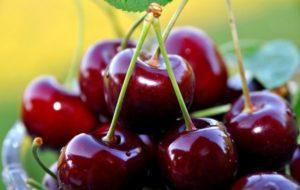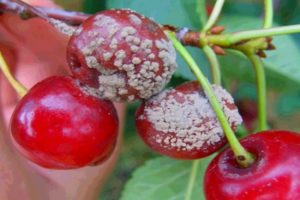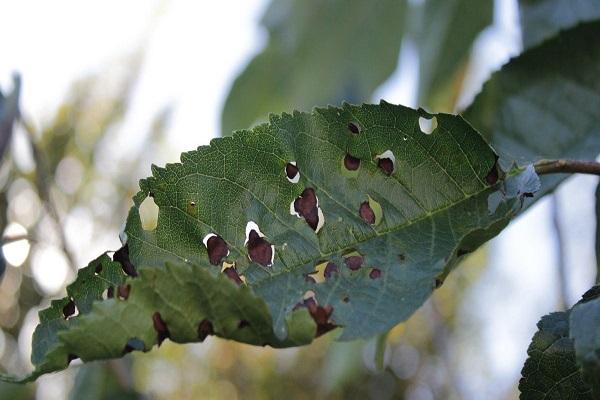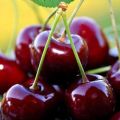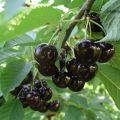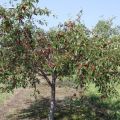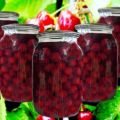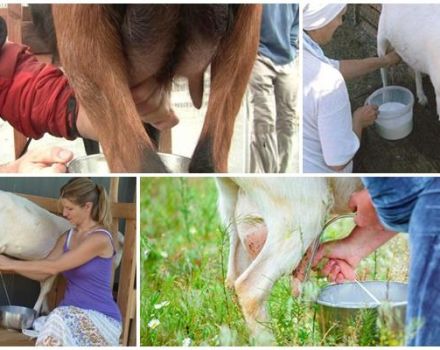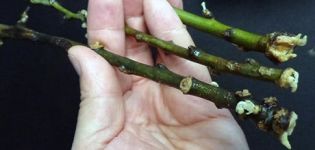Description of varieties of large-fruited cherries, pollinators, cultivation and care
The berries of the large-fruited cherry are quite useful for humans. They contain an important element called coumarin. It helps prevent blood clots and plaques. They also contain a lot of potassium carotenoids and vitamins, which are equally important for the body. At the same time, cherries have very tasty fruits, and therefore every gardener seeks to grow at least a few trees of this berry on his site.
How did the sweet cherry variety Krupnoplodnaya
The fruits of the variety are rather large in comparison with other cherries. It was brought out by Ukrainian breeders at the Research Institute of Horticulture, whose names are MT Oratovsky and N.I. Turovtsev. Such a cherry was obtained after pollination of the Napoleon White variety with a combination of pollen from Elton Zhabule and Valery Chkalov.
The resulting variety inherited only advantages: large berry size with thin, dense skin, juicy pulp and sweet taste.
General information about the plant
One such cherry weighs on average 12-15 g, sometimes their weight reaches 18 g, which is a record for cherries.
The tree itself can grow up to 4-5 meters in height. The beginning of fruiting falls on the 4th year after planting. The berries of this cherry are dark red, the flesh is maroon. The stone, like the berry itself, is rather large, well separated from the pulp. One tree brings up to 60 kg of berries.
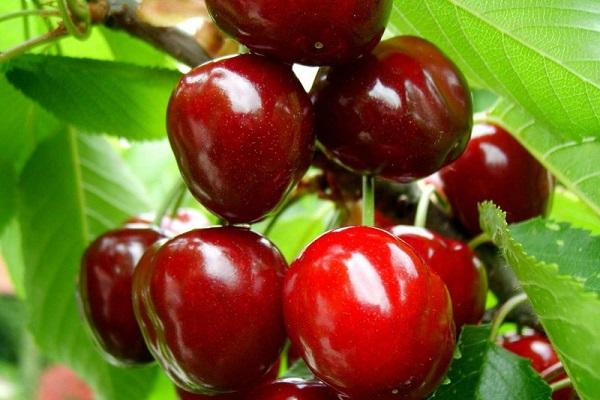
Advantages and disadvantages
Many of the advantages of this variety are simply obvious, and these are:
- bountiful harvest every year;
- large fruits;
- frost resistance;
- drought resistance;
- good transport tolerance;
- can be grown in almost any soil;
- irregular fertilization is normally tolerated.
The only drawback that can be distinguished is the inability of the tree to bear fruit in the absence of pollination with pollen from other species of cherries..
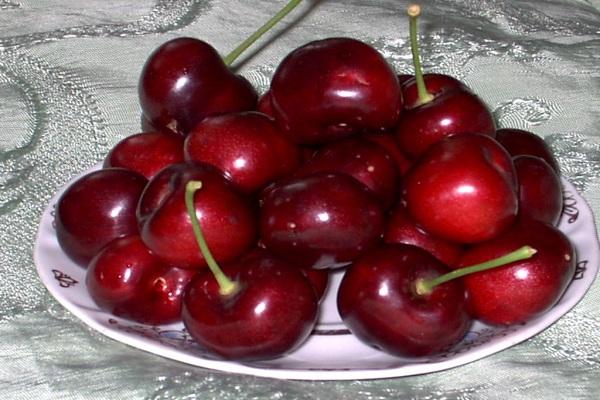
Pollinating varieties
Experienced gardeners recommend planting other varieties of crops on the site where the large-fruited cherry is planted. This is necessary to dust this tree. Otherwise, it will bear fruit only 5%.
Ideal neighbors for Large-fruited cherries will be the following varieties: Bugarro Oratovsky, Surprise, Dyber Black or Francis.
How to grow a crop correctly
In order to properly grow this variety and harvest a large harvest, you need to know what conditions the tree needs.
When to plant
The best time to plant cherries will be spring, when the soil has completely thawed out and there is no threat of frost return.But it is also not worth delaying with this, because seedlings usually have shortened roots, and at first they cannot supply themselves with a sufficient amount of moisture, the tree may die from a lack of it. In autumn, these trees are not planted, since the thin shoots are not yet winter-hardy.
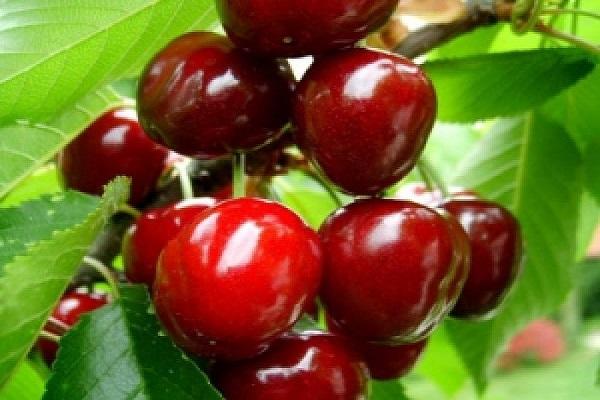
Light and air conditions
Young cherries are susceptible not only to frost, but also to cold air. Also, the seedling needs a lot of light. Based on this, gardeners plant seedlings from the southern side of the site, where there is a lot of sun, light and no cold wind. At the same time, it is not worth planting cherries close to buildings.
Seedling preparation
In order to grow a healthy fruit-bearing tree, you need to initially prepare the right seedlings. You can plant one-year and two-year specimens, which are bought in nurseries or garden stores. You need to give preference to a tree with a better developed root system. If the grafting site is visible, this is also a good sign.
12 hours before planting, the seedlings are soaked in water. Then they make a special talker made of clay, to which water and mullein are added. The roots are dipped into this mixture so that they do not lose moisture.
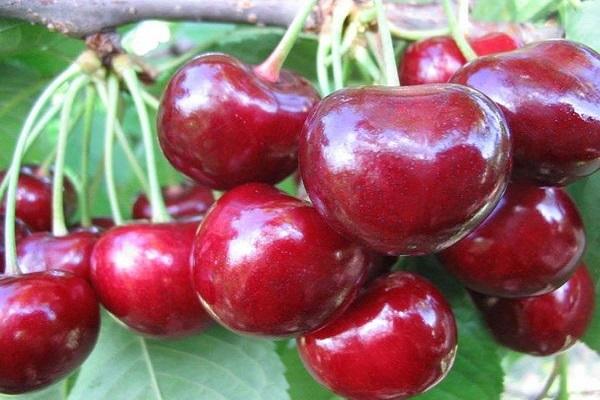
Location
It is necessary to arrange the seedlings so that the distance between the cherries is at least 3 meters. And between the rows at least 5 meters. The crowns and root system of trees must have enough space for full development.
Landing technology
Pits for planting are dug in such a way that they are twice the width and depth of the root system of the seedling.
Next, connect 2 buckets of humus with earth, superphosphate (400 g) and sulfate (100 g). Pour the mixture into the pit. A layer of earth is poured on top of the fertilizer, since the roots should not come into contact with it.
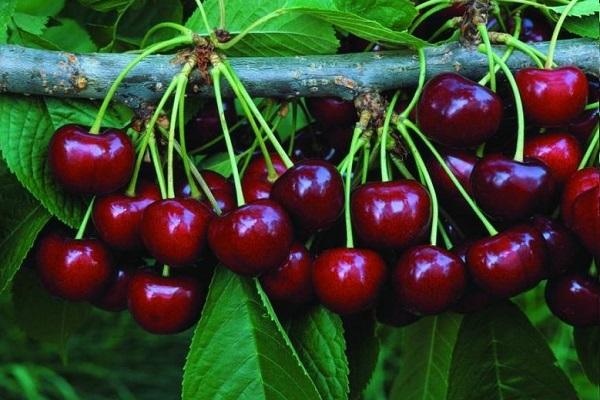
At the bottom of the pit, make a small protrusion from the soil and drive a peg into it. A seedling will be attached to it. At the seedling, the roots are straightened and placed on a tubercle, covered with earth and tamped. Tied to a peg.
A roller is made around the tree, forming a hole into which 2 buckets of water need to be poured. The soil is mulched around the seedling. For this, peat or sawdust is suitable, in extreme cases, dry earth.
Important! After planting cherries, the large-fruited root collar should be visible above the ground level. Otherwise, the tree will grow slowly and not bear fruit for a long time.
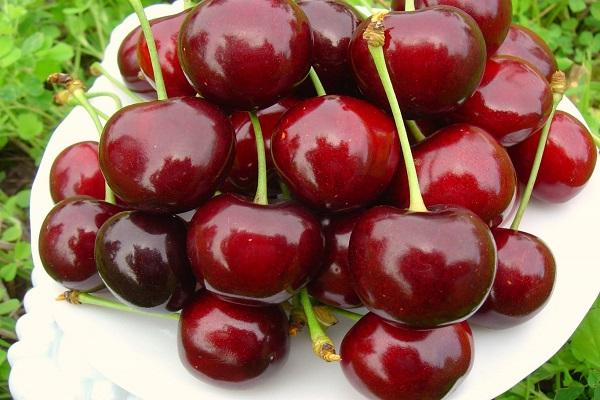
Recommendations for the care of cherries
Although this sweet cherry is unpretentious, it still needs some care. The main activities are: watering, pruning and treatment from pests and diseases.
Watering and feeding
Watering young cherries is best done once a week. It is necessary to irrigate with a sufficiently large volume of water so that it can soak the soil by 30-40 cm, since the main part of the active roots is located at this level.
Watering should be carried out during the period of intensive growth, during the filling of berries, during droughts and before winter, before the onset of cold weather. And when the cherries are already ripe, it is not worth watering the tree. This can lead to cracking of the fruit.

Also, trees of large-fruited sweet cherry are not watered in the second half of summer, this reduces winter hardiness and slows down the growth of shoots. But subwinter moisture is important for better wintering, although they are often forgotten.
Fertilizers, which are applied at planting, will last for 3 years. But nitrogen fertilization was not applied during planting. In this regard, in the second year, a groove is made around the tree, extending 10 cm deep, and urea (120 g) is poured into it, poured with water and covered with soil. A year later, the same procedure is carried out.
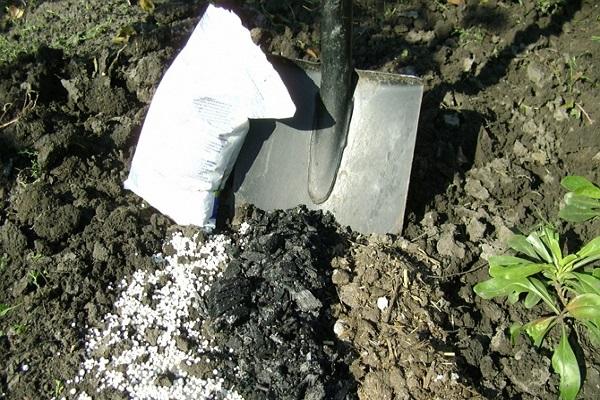
Pruning and shaping the crown of a tree
Pruning of young branches of Large-fruited cherries is carried out in the same way as on other fruit trees. They are cut by ¼ or half, this improves the quality of the fruits of the future harvest. The procedure is carried out in April-May.
You don't have to form a crown, since this process takes place on its own. You just need to make sure that the growth of the branches was uniform, and if necessary, cut off the "leader".
Additional formation of the crown may be necessary in the case when the tree was somehow damaged, and its main guide was damaged. At the same time, “competitors” appear immediately. If you allow them to develop further, then this is fraught with a break in the branches from the weight of the crop in adulthood.
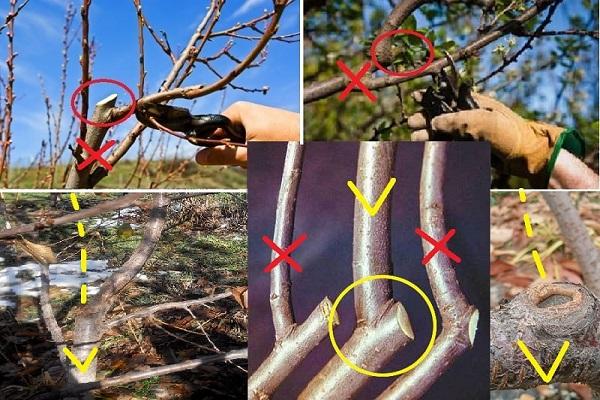
Among the competing branches, choose the one that grows evenly and is the strongest. The sections are treated with copper sulfate.
Frost protection for cherries
In the autumn, after all the leaves have fallen off, the cherries are well watered, the trunks and forks are whitewashed. Whitewashing saves the tree bark from freezing in winter.
Another measure that will not only help large-fruited cherries in wintering, but also save them from rodents. To do this, you just need to trample the snow around the tree. Thus, a dense crust will turn out, which will not allow the root system to freeze, and rodents will not be able to make holes in the snow.
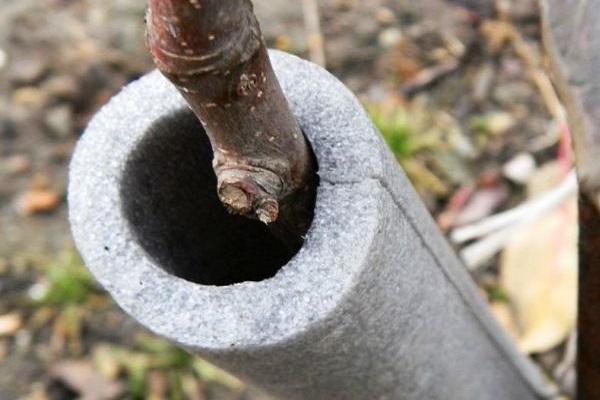
Pest and disease control
With timely preventive measures, large-fruited cherries almost do not suffer from diseases and parasites. Their description and required actions are below:
| Disease | Signs | Prevention / Treatment |
| Hole spot | Red spots that dry out and fall out. Berries stop growing, acquire an irregular shape | Treatment with a 5% solution of copper sulfate before the appearance of foliage and after falling off, in the fall |
| Gum therapy | A resin protrudes on the bark, in which bacteria develop, leading to drying of the shoots | Remove the resin by grabbing healthy tissue. Treat with a 1% solution of copper sulfate. Cover with garden varnish |
| Scab | Bright yellow spots on the sheets that darken and crack over time | 2-3 treatments with "Kuprozan". Re-process after 20 days |
| Monilial burn | Sudden drying of branches, foliage, ovary | 2 treatments with Horus at 1 week intervals |
| Pest | Signs | Prevention / Treatment |
| Aphid | Clump of small black insects | Treat with the medicine "Decis" or "Inta-Vir" |
| Weevil | Eats buds, buds and ovaries, its larvae, deposited in the seeds, spoil the fruits | Spray the tree with Aktellikom after flowering |
| Cherry fly | Affects fruits, after which they become soft, rot and fall from the tree | Treat the tree 2 times with the formation of the ovary "Decis". Interval - 2 weeks |
Harvesting and storage
Large cherry is a late variety. The berries ripen in the second half of July. Fruit ripening does not occur at the same time, so the harvest is carried out 2-3 times.
After picking, cherries can be stored for 2 weeks, provided that the temperature is from 0 to +2 ° C, and the humidity is 90%.
Large-fruited sweet cherry clearly wins against the background of its fellows. When choosing which variety of culture to plant on their site, many gardeners prefer it, because it demonstrates high productivity in the form of large, tasty berries every year.
